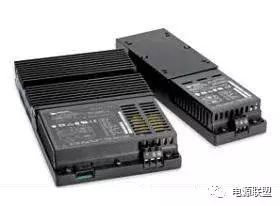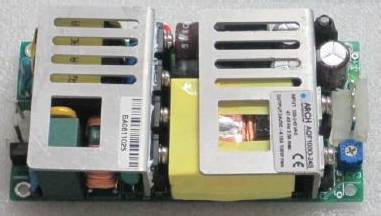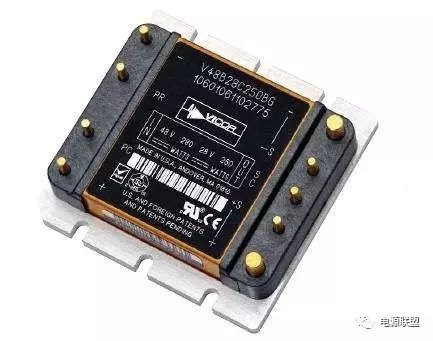1 Development Overview
Switching power supply is known as high-efficiency energy-saving power supply. It represents the development direction of regulated power supply and has become the mainstream product of regulated power supply. For different equipment applications, switching power supplies are divided into two categories: (1) medium and small power switching power supplies; (2) high-power switching power supplies. Medium and small power switching power supplies are generally in the form of switching power supply modules; while high power switching power supplies are generally fabricated using discrete components or control modules. For the core unit of high-power switching power supply, in 1977, the first developed into a pulse width modulation (PWM) controller integrated circuit, typical products such as MC3250, SG3524, UC3842: since the 1990s, the switch frequency of 1MHz has been developed abroad. High-speed PWM, PFM (Pulse Frequency Modulation) chips, typical products such as UC3842, UC1864, etc.; for the integration of the center, 21, power switching power supply, roughly divided into two stages: the first century in the early 1980s The company (SCS-Thomson) first introduced the L4960 series of single-chip switching regulators; in the 1990s, the company introduced the L4970A series. The utility model is characterized in that a pulse width modulator, a power output pole, a protection circuit and the like are integrated on one chip, and a power frequency transformer is required to be isolated from the power grid when used, and is suitable for producing a low voltage output (5.1-40V) and a medium and medium power (400W or less). ), high current (1.5-10A), high efficiency (more than 90%) switching power supply, but in essence, it is still a DC power converter. In 1994, the United States Power (POWER) company in the world first developed a three-terminal isolated pulse width modulation single-chip switching power supply, known as the "top switching power supply." Its first generation is the TOPSwitch series, and the second generation is the TOPSwitch-n series in 1997. In 1995, the company introduced a series of high-efficiency, low-power, low-cost four-terminal single-chip switching power supply. In 1999, Motorola introduced the MC33370 series of five-terminal single-chip switching power supply, also known as Highvoltage Power Switch Regulator. . At present, single-chip switching power supplies have formed 4 series and nearly 70 models.

There are more than 300 independent research and development and production manufacturers of switching power supplies in China, and there are more than ten scales. Some companies, such as CLP Huaxing's self-developed power series products have been widely recognized, and have considerable advantages in the power market competition, and a small number of exports; the switching power supply developed by colleges and universities has Northwestern Polytechnical University, etc., all have certain technical advantages. Among them, the high-performance communication switching power supply developed by Northwestern Polytechnical University is a relatively good product.
2. Key technologies for switching power supplies2.1 switching power supply working principle

Switching power supply mainly refers to high-frequency switching DC stabilized power supply made by various new self-shutdown devices and transformed by technology. There are many different forms, especially pulse width modulation (PWM), and now we will focus on this form of switching power supply.
The principle structure of the switching power supply adopting PWM technology is shown in Figure 1. The energy from the grid is transferred to the load power frequency grid AC voltage through the input rectification and filtering circuit to obtain the high ripple unregulated DC voltage, and then converted into a conformance through the power conversion circuit. The required rectangular wave pulsating voltage is finally smoothed into a continuous low ripple DC voltage by an output rectifying and filtering circuit.
The control loop needs to complete the control of the output voltage regulation while providing the high-voltage switch T-tube base drive pulse, and must also provide protection for the power supply or load. It is usually composed of a basic circuit such as a detection and comparison amplifier circuit, a voltage-pulse width conversion circuit (V/W circuit), a clock oscillation circuit, a base drive circuit, an overvoltage and overcurrent protection circuit, and a self-use voltage source.
Known as the clock oscillator, this power supply uses the detection circuit to reflect the output voltage value, generates an error signal by comparison with a given reference voltage, and modulates the pulse width through the V/W circuit to adjust the output voltage.
2.2 key technologies
1. High-frequency switching technology The higher the power switching frequency, the smaller the capacity of the required transformer and filter capacitor. This is the fundamental means of reducing the size and weight of the switching power supply. However, increasing the switching frequency increases the switching loss and the loss of passive components, and also causes electromagnetic interference problems. Moreover, the higher the switching frequency, the higher the requirements on the switching device, which will reduce the reliability of the power supply and increase the power supply. the cost of.
2. Soft switching technology
In order to solve various adverse effects caused by increasing the switching frequency, soft switching technology is usually adopted, including passive lossless (absorption network) soft switching technology, active soft switching technology, such as ZVS/ZCS resonance, quasi-resonance, constant frequency soft switching. Technology (ZVS/ZCS-PWM), and zero voltage, zero current conversion (ZVT/ZCT-PWM) technology. Soft-switching technology is one of the hotspots in the field of power electronics in recent years because soft-switching technology can effectively reduce switching loss and switching stress to improve efficiency and increase reliability.
3. Power factor correction technology
Increasing the power factor of the switching power supply input terminal can reduce the reactive power loss of the power supply and reduce the harmonic pollution of the power supply to the power grid. Since switching power supplies are widely used in various fields, when a large number of switching power supplies are used at the same time, it will have a serious impact on the power grid. Therefore, the adoption of power factor correction technology is the trend of switching power supply development in the future. The input power factor is an important parameter to measure the quality of switching power supply.
4. Intelligent technology
At present, foreign communication systems generally adopt centralized monitoring and distributed power supply methods (distributed households), and domestic power supply methods are also being developed. The distributed power supply mode has the advantages of high reliability, low cable loss, and strong fault tolerance, but it is inconvenient for daily maintenance compared to a centralized power supply system. Therefore, the use of intelligent technology to achieve unattended, can give full play to the advantages of the distributed power supply system, and achieve significant economic benefits. The high-frequency switching power supply intelligent technology includes communication, fault diagnosis, control and other aspects of technology, intelligent is the development trend of high-frequency switching power supply.

3.1 high frequency
High frequency is one of the main directions of the development of switching power supply technology, and it is also one of the main trends in the development of high frequency switching rectifiers. However, as the switching frequency increases, the switching losses of the power devices will increase proportionally. Therefore, when the switch rate is high, it is necessary to take a very effective "softening" measure to minimize the switching loss of the device. The current popular method is to use active soft switching technology, such as resonance technology, quasi-resonant (or multi-resonance) technology, ZCS-PWM (or ZVS-PWM) technology and ZCT-PWM (or ZVT-PWM) technology. Another practical method is to use a passive, no-power soft-switching technique that uses passive components (L, C, D, etc.) to form a unique (patented) circuit network that achieves lossless leveling of the power switch.
3.2 modular
In addition to its strong adaptability, the modular structure has some important advantages, such as: initial initial investment, convenient expansion, convenient installation and transportation, redundant additional work, and quick and convenient maintenance. At present, most communication power supply manufacturers adopt modular design, and have formed serialization, and their single rectifier modules
The current is mostly 5A, 10A, 30A, 50A, 100A, 200A, etc. In the communication field, including the mobile communication and other widely used rectifier modules are 30A, 50A, 100A, can form 150A, 300A, 600A, 1000A and other power level DC systems, mainly used in large-scale electronic telephone stations, mobile communication base stations, etc. .
3.3 Intelligent
Intelligentization is the inevitable result of the high standard requirements of modern communication systems for its basic power supply. It is the perfect embodiment of the application of new single-chip technology in the field of switching power supply. At present, most communication power supply manufacturers have successfully applied the single-chip technology to the high-frequency switching rectifier module and the monitoring module, and connected with the microcomputer through RS232, RS422 and other standard communication ports and MODEM to realize the "three remote" function, and Finally, through the public telephone network or the communication private network, the power systems in different regions and even the world are connected, and large-area centralized monitoring is implemented, which meets the requirements of high standards and high reliability of modern communication systems, and achieves the purpose of intelligence. .
3.4 Standardization
At present, the high-frequency switching rectifier products must meet the standards in design. In addition to their own specifications, there are mainly electromagnetic compatibility standards and safety standards. International organizations and relevant domestic departments have actively developed various electromagnetic compatibility standards. Each power supply manufacturer has or is preparing for the satisfaction of its products to meet the requirements of these standards, in order to achieve "green" products. At home and abroad, we have established corresponding safety standards and implemented various safety certifications. For example, there are “CE†in Europe, logo certification, and China has “Great Wall†logo certification. Standardization is the need for product quality improvement and international development trends.

With the advancement of technology, especially the upgrading of power devices, the continuous improvement of power conversion technology, the continuous use of new electromagnetic materials, the continuous improvement of control methods, and the continuous development of technologies in related disciplines, switching power supplies have become multidisciplinary technology. The product of fusion.
At present, the domestically produced communication high-frequency switching power supply is close to foreign products in terms of function, but there is still a gap in performance, mainly in the reliability and stability is not high enough. The lack of systematic, modular, and engineered design methods and the necessary simulation methods are the reasons why the system does not work well. In short, the development direction of switching power supply is: (1) the frequency is high, so the dynamic response is fast, and it is also necessary to cooperate with high-speed microprocessor; (2) the volume should be reduced, and the transformer, inductor and capacitor should be reduced in volume; (3) High efficiency, reduced heat energy, easy heat dissipation, easy to achieve high power density, and thus produce ultra-high-power high-frequency switching power supply; (4) High integration of power supply system.
Ribbon Tweeter,Ribbon Tweeter Speaker,35W Sound Ribbon,Folded Ribbon Tweeter
Guangzhou BMY Electronic Limited company , https://www.bmy-speakers.com